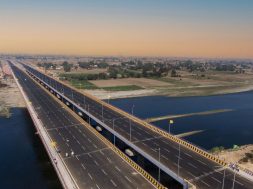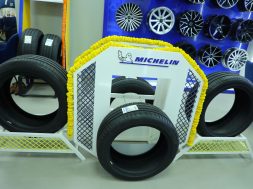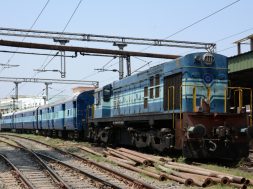Making roads from plastic waste
Tata’s JUSCO has constructed plastic roads by using bitumen technology
Plastic waste is a major environmental and public health problem at Jamshedpur. Plastic shopping or carrier bags are one of the main sources of plastic waste. Plastic bags of all sizes and colours dot the city’s landscape due to the problems of misuse, overuse and littering. Besides this visual pollution, plastic bag wastes contribute to blockage of drains and gutters, are a threat to aquatic life when they find their way to water bodies, and can cause livestock deaths when the livestock consume them. Furthermore, when filled with rainwater, plastic bags become breeding grounds for mosquitoes, which cause malaria. Burning of these chlorine-containing substances releases toxic heavy metals and emits noxious gasses like dioxins and furans. They are the most toxic and poisonous substances on earth and can cause a variety of health problems including damage to the reproductive and immune system, respiratory difficulties and cancer. Land filling of plastics into properly designed disposal sites takes up valuable room in the site for a non-toxic, non-leachable, non-decomposable material. Whether plastic is a menace or not depends how we use it and how we dispose of it minimising the impacts on the environment.
Jamshedpur Utilities and Services Company (JUSCO), a Tata Enterprise, has undertaken an initiative to use plastic waste for road construction in Jamshedpur. The initiative, which started out as a pilot project, is now being replicated across the city and several kilometres of roads have been constructed using plastic waste.
Use of waste plastic for road construction is a patented technology developed by Dr R Vasudevan, Professor at Thiagarajar College of Engineering. In this process, the waste plastics, mainly films and foams are shredded and sprayed over hot stone. Therefore plastic get coated over stone and the hot plastic coated stone is mixed with bitumen (tar) and the mix is used for road laying.
According to Dr Vasudevan, the plastic tar road laying can be done easily using existing machinery like mini hot mix plant or central mixing plant. He mentioned, “10 per cent of the bitumen used can be substituted by plastics, hence saving of 10 per cent bitumen is achieved. One tonne of bitumen costs around ` 50,000 whereas the same volume of waste plastics costs around ` 10,000 only.” Therefore, a significant amount of financial can also be achieved using plastic wastes for road making.
Preparation of the mixThe aggregate mix, used for flexible road construction is first coated with molten plastics waste and this plastic coated aggregate is used as raw material. To the hot plastics coated aggregate (165 C), bitumen (160 C) is added and mixed and used for road construction. The bitumen is not blended with plastics waste. Properties of the plastics waste coated aggregate-bitumen mix“Even after 96 hours, there is no stripping of bitumen layer showing the resistance towards stripping and pot hole formation,” says Gaurav Anand, Senior Manager (Quality Assurance) of JUSCO. He adds, “Marshall Stability value increases depending upon the percentage of plastics used for coating from 1,265 kgs to around 2,500 kgs thus increasing the strength of the road.”
Extraction of bitumen from the mix is very slow compared to non-plastic-bitumen mix showing the increased strength of binding of bitumen. Also, plastics coated aggregate has low percentage of voids, hence less oxidations of bitumen and less ravelling and rutting.Plastic coated aggregate – bitumen mix have very low moisture absorption and hence no stripping or pothole formation. The percentage of bitumen needed to form an effective mix can be reduced from 5 per cent to 4.5 per cent thus a saving of bitumen, not less than 10 per cent is also possible, claims Anand
Plastics coated aggregate, when soaked in water for 72 hours, there is no stripping. The aggregate gains non-wetting property with respect to water.
Plastic coated aggregate, when mixed with hot bitumen, they mix well and the blend can be used for road construction. Coated plastics waste helps to increase both blending property and binding property.
MethodologyThe roads can be constructed with plastic wastes (8 per cent) in conjunction with bitumen (92 per cent). Polymer-modified bitumen is in use since long. It is approved in the Indian Roads Congress’ Special Publication 53 guidelines, 1999. In case of roads from plastic wastes, according to Anand, “Marshall Stability value is initially 25 per cent better. In the later stage, it can be 200-300 per cent better than unmodified roads.”
Tests conducted by JUSCO shown 260 per cent improved resistance to water-soaking, hence ideal for sub-grade. “100 per cent improvement in fatigue life of roads is a significant achievement,” says Anand.
Following steps to be taken to develop roads from plastic wastes:• Step 1: Plastic waste made out of PE, PP and PS cut into a size between 2.36 mm and 4.75 mm using shredding machine. • Step 2: Similarly the bitumen is to be heated to a maximum of 170 C to have good binding and to prevent weak bonding.• Step 3: At the mixing chamber the shredded plastic waste is to be added to the hot aggregate. It gets coated uniformly over the aggregate within 30 seconds, giving an oily look plastic coated aggregate is obtained.• Step 4: Hot bitumen is then added over the plastic coated aggregate and the resulting mix is used for road construction. The road laying temperature is between 110 C and 120 C. The roller used is 8-tonne capacity. Zero maintenance costAnand says there are no maintenance costs for the first five years. He also said that some of the major returns out of developing roads from plastic waste include plastic waste free clean environment, better road without any deformation due to rain or traffic load, saving of natural resources, effective and eco-friendly use of waste plastics.
ConclusionThe process of using low end waste plastic to construct roads has been included in Plastic Waste Management and Handling Rule amended on 4th Feb 2011. It indicates that it has been a proven technology to take care of Earth in an eco-friendly way.
27
Cookie Consent
We use cookies to personalize your experience. By continuing to visit this website you agree to our Terms & Conditions, Privacy Policy and Cookie Policy.









